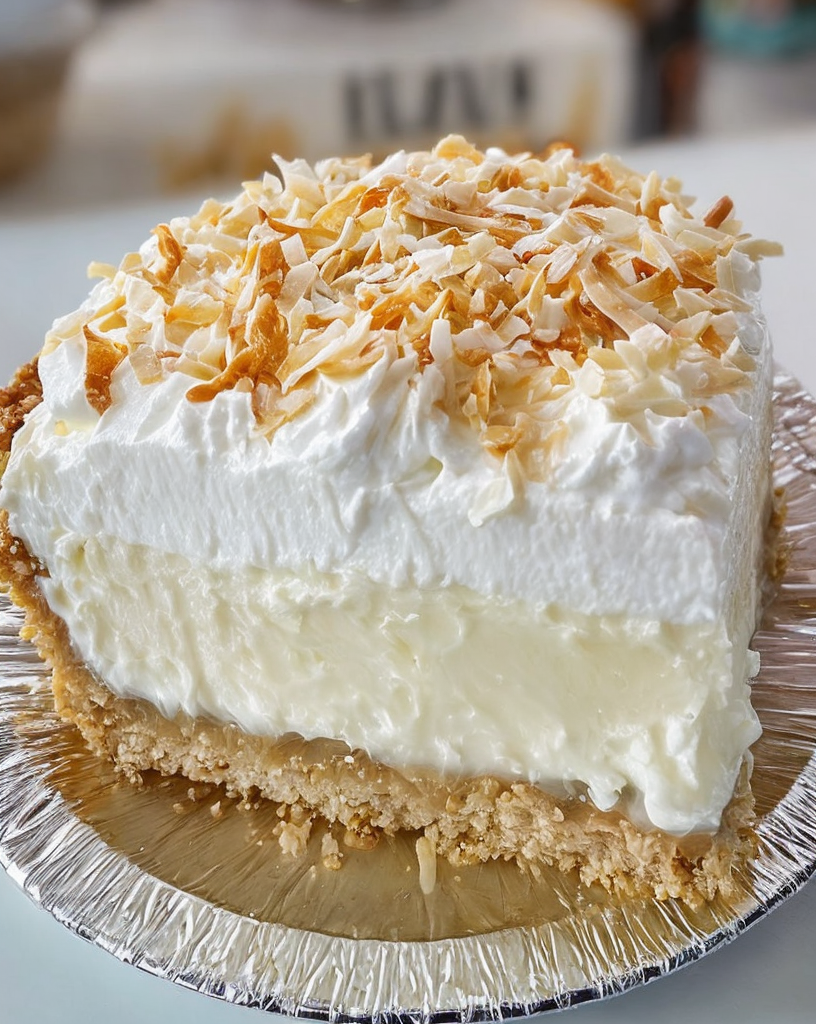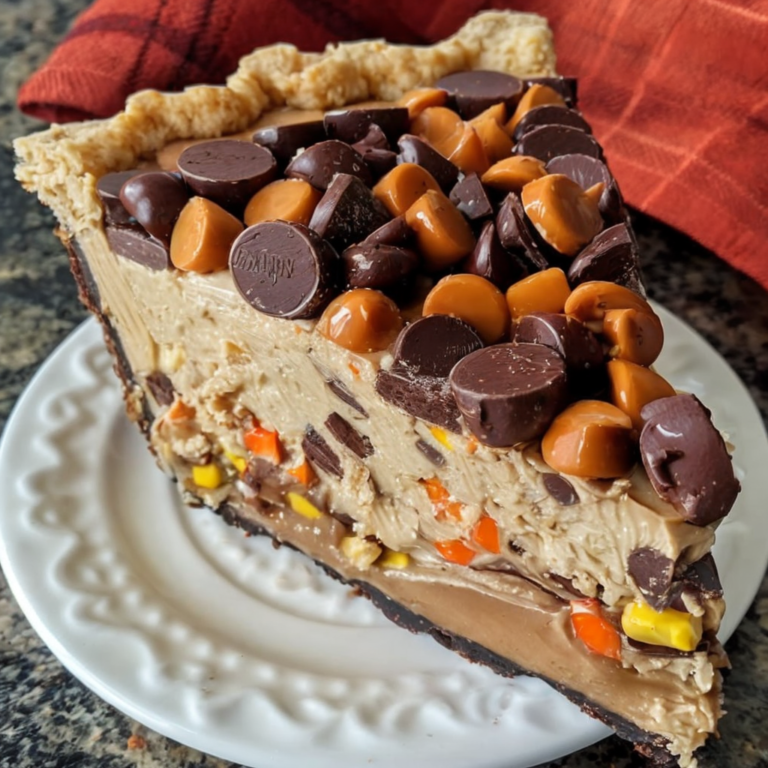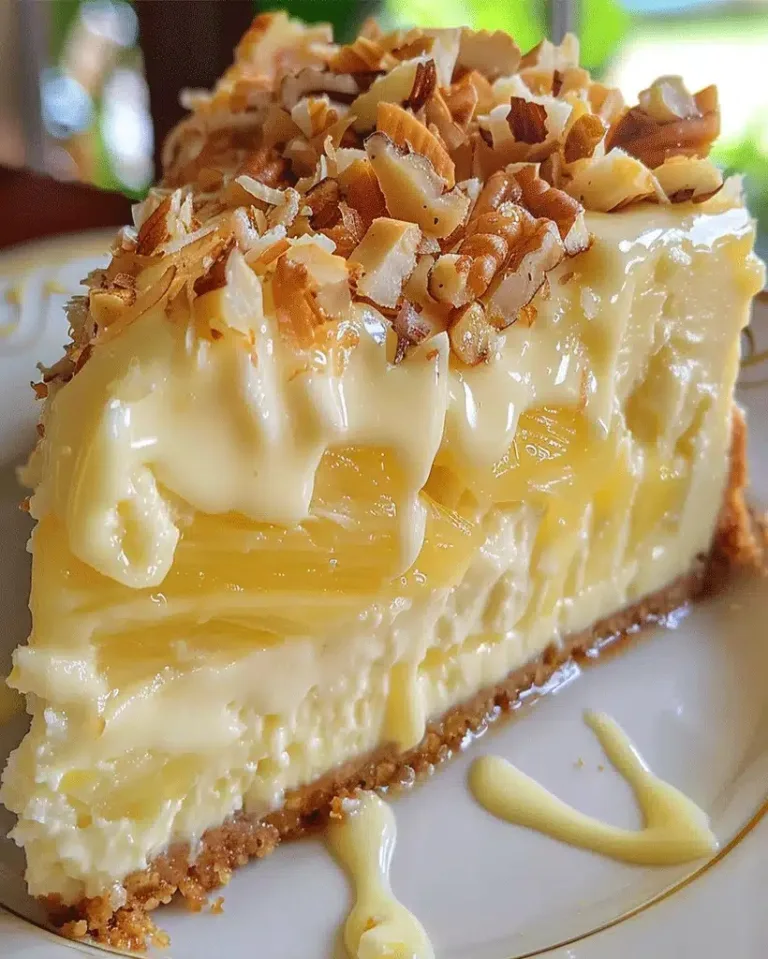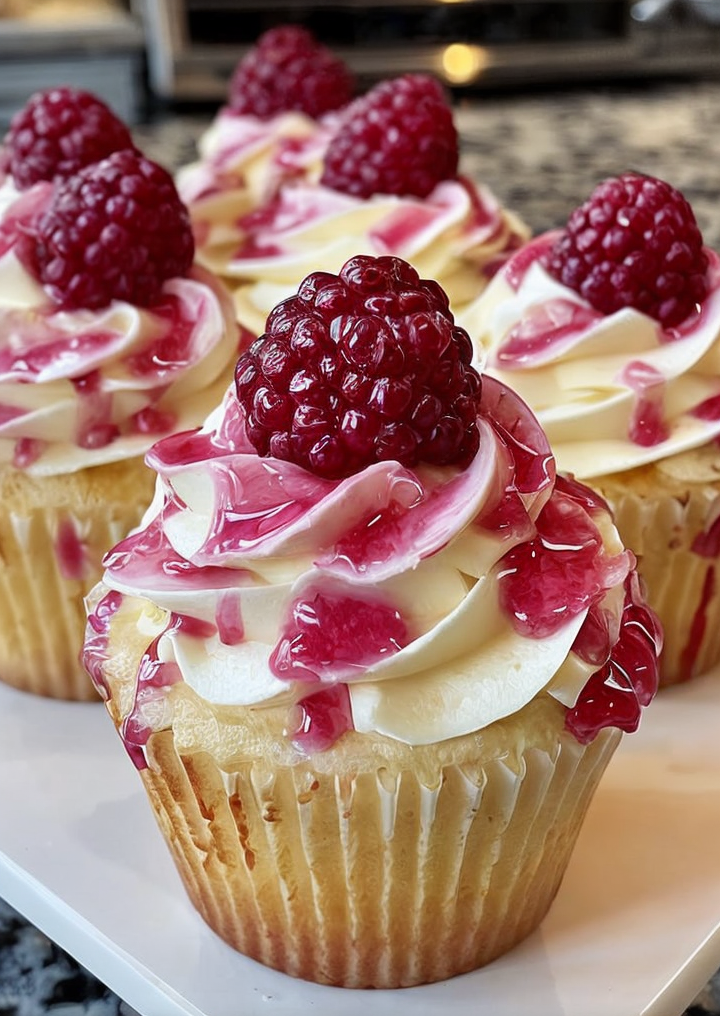Homemade Coconut Cream Pie Recipe – Grandma’s Family Favorite
Grandma’s Homemade Coconut Cream Pie: A Timeless Dessert Delight
Embark on a culinary journey with Grandma’s Homemade Coconut Cream Pie, a delectable dessert infused with tradition and love. This pie presents a creamy coconut filling cradled in a flaky, buttery crust, topped with clouds of whipped cream and a sprinkle of toasted coconut. As you slice through its layers, you can almost hear the gentle crackle of the crust and smell the intoxicating aroma of freshly grated coconut. Whether you’re a seasoned baker or a kitchen novice, this coconut cream pie recipe promises to captivate both your taste buds and your heart.
Perfect for any occasion, Grandma’s coconut cream pie effortlessly combines simplicity with elegance, making it a star attraction at family gatherings and potlucks. The recipe’s well-balanced sweetness paired with its luscious, silky texture delivers a taste sensation that keeps everyone coming back for more. Crafted with easily accessible ingredients and sprinkled with a hint of nostalgia, this pie is a timeless favorite that continues to charm dessert lovers of all ages.
Quick Recipe Highlights
- Flavor Profile: A delightful combination of rich coconut cream and sweet vanilla, complemented by a buttery crust.
- Texture: Silky cream filling juxtaposed with a flaky, crisp crust and topped with airy whipped cream.
- Aroma: The sweet, nutty fragrance of coconut mingling with warm vanilla notes.
- Visual Appeal: Lustrous cream filling topped with a cloud of whipped cream and golden toasted coconut flakes.
- Skill Level Needed: Some baking experience is beneficial for crafting the perfect pastry crust and silky coconut cream.
- Special Equipment: A pastry blender and a pie dish help achieve the ideal crust, along with an electric mixer for the whipped topping.
Recipe Overview
- Difficulty Level: Intermediate – requiring patience for the integration of diverse textures and smooth fillings.
- Category: Dessert, perfect as a show-stopping dinner party finale or a cozy family treat.
- Cuisine: A beloved dessert staple in American cuisine, influenced by Southern baking traditions.
- Cost: Relatively budget-friendly, with most ingredients already pantry staples.
- Season: Best enjoyed in spring and summer when light, creamy desserts are in high demand.
- Occasion: Ideal for holidays like Easter and Thanksgiving or a simple weekend indulgence.
Why You’ll Love This Recipe
Coconut cream pie brings together the finest flavors and textures for a dessert experience that’s both comforting and indulgent. Imagine biting into a slice and savoring the creamy coconut filling that harmoniously dances with the crisp, buttery crust. The whipped cream topping adds a soft, luxurious layer, with toasted coconut flakes giving a hint of crunch and extra flavor. Each component works in tandem to create a balanced, multidimensional taste experience.
Not only is Grandma’s coconut cream pie a taste delight, but it’s also a convenient confection to prepare. With its make-ahead potential, you can spend less time in the kitchen on the day of your event and more time with your guests. The filling can be prepared in advance and the pie assembled when needed, ensuring everything remains fresh and delightful for your gathering.
Beyond its culinary appeal, one can revel in the nutritional aspects of this dessert. Coconut, a primary ingredient, is rich in fiber and provides a dose of healthy fats, while the milk offers calcium and other essential nutrients. This makes the pie not only a treat for your palate but also a source of beneficial compounds.
Serving Grandma’s coconut cream pie isn’t just about indulging in dessert; it’s about sharing a beloved family tradition. It’s an opportunity to connect over flavors and stories, to bond in shared experiences at the table. Whether it’s a cozy family dinner or a bustling holiday gathering, this pie is the perfect ending to any meal, leaving guests celebrated and satisfied.
Cost-effectiveness and easy accessibility of ingredients transform this recipe from an occasional indulgence to a more regular feature in your dessert rotation. The components are readily available in most grocery stores, allowing you to whip up this masterpiece whenever the mood strikes, without breaking the bank. Enjoy the timeless charm of homemade coconut cream pie anytime you like.
Historical Background and Cultural Significance
The coconut cream pie has long been cherished as a quintessential Southern dessert, boasting a legacy rich in tradition and nostalgia. Originating as an offshoot of the 19th-century custard pies, its evolution speaks to creativity and resourcefulness in baking, when home cooks embellished a basic custard with available ingredients like coconut.
Coconut cream pie holds significant cultural importance, especially in Southern American cuisine, where it often graces tables during holidays and special occasions. Its enduring appeal lies in the simple yet luxurious combination of staple ingredients, reflecting a deep-rooted appreciation for comfort food that warms the soul.
Over the decades, coconut cream pie has evolved into several delicious variations, whether it’s through enriched fillings or decorative toppings. While some versions incorporate a meringue topping instead of whipped cream, others may include hints of rum or lime for added zest. Each rendition tells its own story, enhancing the cultural tapestry of this beloved dessert.
Regional renditions of coconut cream pie might feature local specialties, like a crust made from regional nuts or inclusions of tropical fruits for a unique twist. While its core elements remain, each community adds a hint of its identity, projecting a regional character that flavors its rich history.
Ingredient Deep Dive
Coconut is undeniably the star of Grandma’s homemade coconut cream pie. Prized for its exotic allure, coconut has cultural significance in many tropical cuisines. Traditionally used in both sweet and savory dishes, coconut adds a unique depth of flavor and texture, elevating the dessert’s allure.
Coconut offers substantial nutritional benefits, being rich in dietary fiber and healthy fats, while also serving as a good source of manganese and copper. This makes it more than just a flavorful addition but a component that contributes to overall health and wellness, offering an enjoyable yet beneficial eating experience.
For the ideal coconut selection, opt for unsweetened and finely shredded varieties to achieve the best mixability and texture in your pie filling. Fresh coconut can be used for toasting, ensuring each garnish flake is both flavorful and aesthetically pleasing.
Proper storage of coconut is crucial to maintain its freshness. Keep shredded coconut in an airtight container after opening and place it in a cool, dry spot. Fresh coconuts should be cracked open and their meat stored in the refrigerator, sealed tightly to minimize moisture loss.
If you’re unable to source fresh coconut, unsweetened coconut flakes can serve as a substitute. For those who have dietary considerations, such as allergies, experiment with almond meal or hemp seeds for a mild, nutty texture alternative in the crust.
Common Mistakes to Avoid
- Not chilling the crust adequately before baking can result in a soggy base. Ensure it’s refrigerated for at least an hour.
- Filling the crust while it’s too warm can cause it to shrink. Let it cool completely after blind baking.
- Undercooking the coconut filling is a common pitfall. Cook until it thickens, ensuring it’s creamy and set when chilled.
- Allowing the custard to form lumps due to rapid heating—stir continuously to achieve a smooth consistency.
- Over-whipping the cream for topping can lead to it becoming butter-like; whip until soft peaks form for optimal texture.
- Failing to incorporate a pie buffer (by laying a light sheet of foil gently atop the crust) for even baking.
- Using sweetened coconut without adjusting sugar levels can lead to overly sweet pie—taste as you go.
- Not adjusting the gelatin levels appropriately for different climates, as it might affect the setting of the filling.
Essential Techniques
Blind baking the crust is an essential technique for achieving that perfect flaky base. It involves pre-baking the crust so that it doesn’t become soggy once filled. Mastering blind baking requires weighing down the crust with pie weights or dried beans to prevent puffing and ensuring an even cook throughout.
Achieving the perfect coconut cream filling necessitates patience as the mixture thickens over a gentle heat. Armed with a strong whisk, stir constantly to avoid curdling and ensure the custard sets into a smooth, luxurious layer, rich with coconut infusion.
To toast coconut flakes for garnishing, employ a dry skillet on a medium heat, tossing occasionally for even browning. This technique produces beautifully golden, flavorful garnishes that lend both visual appeal and intensified taste to your coconut cream pie.
Pro Tips for Perfect Grandma’s Homemade Coconut Cream Pie
A regional twist for Grandma’s coconut cream pie may include infusions of local tropical fruits such as pineapple or mango, scattered atop or blended into the cream filling. This adds a burst of freshness, balancing the rich coconut with a tangy kick. Seasonal adaptations can cater to colder months by integrating spices like cinnamon or nutmeg into the crust, creating a warming, aromatic experience that suits autumn and winter gatherings. For dietary considerations, explore using gluten-free flour blends for the crust or swap out traditional whipped topping with coconut cream for a vegan option, without sacrificing the intrinsic flavors and textures that make this pie so beloved. Flavor variations might come from incorporating citrus zest or extract into the filling, giving a lively contrast to the coconut’s sweetness. Alternatively, bold additions such as chocolate shards can introduce a decadent spin on this classic dessert. Texture modifications can be achieved by substituting crunchy elements like chopped macadamia nuts into the crust or sprinkling them over the pie, offering a satisfying bite alongside the creamy interior layers. For presentation alternatives, consider mini tart versions or serving in individual ramekins. These bite-sized variations offer a modern touch and are perfect for cocktail parties where a full slice may not be desired. When it comes to plating the coconut cream pie, consider the use of wide, shallow dessert plates to highlight each delicate layer. Start by wielding a serrated knife to slice the pie neatly, preserving the custard’s lusciousness and the crust’s integrity. Garnishing the pie can elevate its visual interest—use a generous sprinkle of toasted coconut or chocolate shavings on the whipped topping for added texture and a dash of richness. Fresh mint leaves also make a vibrant, aromatic addition. Traditional accompaniments include a scoop of vanilla bean ice cream or a dollop of softly whipped cream, resonating harmoniously with the coconut’s gentle sweetness and creamy filling. Modern serving suggestions involve pairing the pie with a tart raspberry coulis or citrus reduction, contrasting the sweet and creamy elements while enhancing the pie’s visual appeal with bright colors. Temperature considerations are key; the pie is best enjoyed cold but not straight out of the fridge. Allow it to sit for 15 minutes at room temperature before serving to achieve the most favorable flavor release. Ensure portion control by dividing the pie into appropriately sized servings relative to your audience. For dessert tables, smaller slices may be practical, whereas more generous portions may be ideal for family-style dining. Complement Grandma’s coconut cream pie with a chilled glass of Moscato d’Asti, its light sparkling nature and notes of peach and apricot harmonizing beautifully with the coconut’s creaminess and the crust’s buttery richness. For non-alcoholic options, consider pairing with a refreshing coconut water spritzer, infused with a hint of lime or mint for added zest, enhancing the tropical notes of the dessert without overpowering its subtle flavors. Coffee pairings bring warmth and balance, with a medium roast offering nutty undertones that resonate with the pie’s natural sweetness. Alternatively, a light herbal tea such as chamomile can provide a calming counterpart to the coconut’s richness. Consider serving wines and beverages at optimal temperatures to enhance your tasting experience—chilled for wines and lightly warmed for coffee or teas—to maintain balance and freshness with each bite of pie. Serving suggestions may also include a coconut cocktail or mocktail bar, allowing guests to explore complementary flavors while enjoying the nostalgia of this timeless dessert, enhancing the communal dining experience. Store Grandma’s coconut cream pie in the refrigerator to maintain its freshness and presentational integrity. Cover with plastic wrap or a pie server dome to provide a seal, protecting against drying out or absorbing fridge odors. Consider temperature requirements carefully. Coconut cream pies should not be left at room temperature for extended periods due to the custard filling, which can spoil if not chilled. Use glass or ceramic containers for storage, their nonporous nature preventing flavor contamination. Avoid metal, which can impart unwanted flavors over time to the delicate custard filling. Observe warning signs of spoilage, such as unusual odors, color changes, or a watery film atop either the whipped cream or filling. These indicate the pie has passed its best-by period and should not be consumed. For reheating individual slices, allow them to sit at room temperature briefly but refrain from microwaving, which can compromise the custard’s creamy consistency. Enjoy cold or slightly acclimated to room temperature. Freezing is an option, especially for the filling and crust separately, but it may affect texture upon thawing. Consume within a month for best results, letting thaw in refrigeration and re-assembling the pie upon serving. To prepare Grandma’s coconut cream pie ahead, ensure an organized prep timeline. Begin by crafting and freezing your pie crust, which can be handled days or even weeks in advance, providing a robust base to begin assembly. Store partially completed components, such as the custard filling, in rigid, airtight containers in the fridge, spaced to avoid compression. This prevents separation or breakdown while waiting to complete the pie. Evaluate the quality impacts of whether to assemble the entire pie in advance or partially; complete assembly on the day of consumption can yield fresher results, especially for whipped cream topping. Assemble the pie within a few hours of serving if layering freshly whipped cream, which ensures that the topping maintains its aerated texture and does not wilt. Reheating guidelines for previously baked crust may involve a brief bout in the oven before filling, to renew crispiness, while the filling should be gently brought back to room-divine temperature before final touches. Incorporate fresh elements last-minute to enhance visual appeal and freshness—the sprinkle of toasted coconut, for instance, offers a crunchy layer that complements the pie’s textures divinely. When halving Grandma’s coconut cream pie recipe, utilize a smaller pie dish to maintain the same height for your crust and filling. Measure ingredients precisely to ensure flavor balance remains consistent. Consider doubling or tripling the recipe when entertaining larger gatherings. Adjust equipment, such as using oversized mixing bowls and baking tarts in batches to accommodate volume differences efficiently. Equipment adjustments for larger or smaller pies might include using a food processor for crust mixing or smaller-sized pie weights to facilitate more efficient blind baking for any scaled variation. Adapt timing by monitoring bake times closely as increased volumes or larger pie sizes may extend cooking durations slightly. Be attentive to sensory cues like crust browning or filling thickness. Storage considerations become paramount when scaling recipes. Ensure appropriate space is available in your refrigerator or freezer, especially when handling multiple pies or enlarged single servings. A macro breakdown of Grandma’s coconut cream pie reveals a dessert rich in fats primarily from the coconut and cream, alongside carbohydrates from the crust and custard base. Balanced consumption is advisable for dietary considerations. Micronutrient analysis showcases significant contributions from vital elements such as manganese in the coconut and protein and calcium from cream and milk, offering nutritional benefits alongside indulgent enjoyment. Understanding health benefits involves recognizing the medium-chain triglycerides in coconut fat, known to be more readily metabolized, providing a potential energy source more efficiently. Portion analysis suggests a reasonable slice size to indulge in its flavors while maintaining rigorous adherence to dietary goals, such as caloric management or balancing dessert indulgences with overall meal plans. Weight management tips include conscious enjoyment, finding satisfaction in savoring slowly, prioritizing fruit or vegetables throughout other courses to provide balance when featuring this luscious pie. For a gluten-free version, substitute traditional flour with a gluten-free blend or almond meal for the crust, ensuring textural quality remains elevated while catering to dietary restrictions. Creating a dairy-free pie can involve swapping for coconut milk in the custard and topping with coconut cream instead of whipped cream. These choices maintain the pie’s natural sweetness and creaminess. Vegan adaptations include using a flax or chia seed replacement for eggs within the custard while capitalizing on coconut cream for both the filling and the topping to deliver a similar taste experience. For a low-carb adaptation, replace conventional pie crust with a nut or seed crust. Incorporate sugar alternatives like erythritol or stevia to maintain the dessert’s inherent sweetness without excess carbs. The keto version takes cues from low-carb modifications, ensuring high-fat coconut-milk inclusion while utilizing almond or pecan bases for crusts to ensure ketogenesis remains uncompromised for dieters. Paleo enthusiasts may enjoy this pie by maintaining the coconut’s natural profile and adopting nut flours for crusts, aligning with whole-food principles without foregoing beloved dessert indulgences. Certain other diets, like low-FODMAP, might favor reduced portions of coconut milk and adherence to specific ingredient choices like lactose-free milk, allowing individuals with digestive sensitivities to delight in the pie harmoniously. Serves: 8 Prep Time: 30 mins Cook Time: 45 mins Total Time: 1 hr 15 mins Address texture issues of your coconut cream pie with patience as the filling cooks over a gentle heat, ensuring it thickens adequately for a creamy consistency. For flavor balance, taste as you go. Adjust sweetness by gradually adding sugar or vanilla extract according to your palate, achieving the perfect level of tropical sweetness. Ensure temperature control during cooking. Overheating can result in filling curdling, while undercooking can prevent the filling from setting properly. Confront equipment challenges with ease: verify pie weights are crucial in blind baking to prevent bubbles, and electric mixers make fast work of whipped cream. Consider ingredient substitutions carefully. Coconut cream can replace whipping cream for topping, offering a similar texture for dairy-free needs without flavor loss. If battling timing concerns, ensure clear measurements for ingredient preparation, so you maintain a composed approach when executing every suspenseful step of your dessert craft. Discover community feedback where enthusiasts share success stories of Grandma’s coconut cream pie at festive gatherings, describing how this delicious classic earned pride of place on their dessert tables. Explore variation successes that readers personalized through cinnamon-spiced crusts or caramel drizzle, finding new favorites unique yet respectful of the original recipe’s timeless charm. Gain insight into adaptation stories, where readers have navigated dietary needs effortlessly, from gluten-free to vegan triumphs, ensuring all could partake in the pie’s indulgent tradition. Leverage reader suggestions that offer inventive flavor infusions or presentation strategies, bridging tradition and innovation to elevate your everyday baking repertoire to extraordinary heights. Appreciate photography tips highlighting the pie’s glowing cream filling and golden crust—these captures inspire culinary art that translates sentimentality into visual delight. Can I make this pie ahead of time? Yes, you can prepare the crust and filling a day in advance. Assemble the pie the morning of your event to ensure the freshest whipped topping. How long does the coconut cream pie last? The pie can be refrigerated for up to 3 days, covered tightly with plastic wrap. Can I freeze coconut cream pie? While freezing may alter the texture slightly, the filling and crust can be frozen separately for up to a month. Thaw and combine before serving. What can I use instead of heavy cream for a dairy-free version? Coconut cream serves as a great alternative, producing a luscious topping while maintaining the pie’s natural coconut flavor. How do I prevent my crust from becoming soggy? Blind bake the crust before adding the filling—preheat, prick with a fork, use pie weights, and par-bake to ensure crispness. What’s the best way to toast coconut for garnish? Toast coconut flakes in a dry skillet over medium heat, stirring often until golden brown for a flavorful and aromatic finishing touch. Should I serve the pie cold or at room temperature? For the finest taste, serve the pie chilled or allow it to sit at room temperature for 15 minutes prior to serving to enhance flavor. How can I make the filling thicker? Adjust the amount of cornstarch or extend cooking time to help thicken the filling, ensuring to stir continuously for a smooth texture. Can I add fruit to the coconut cream pie? Certainly, fruits like pineapple or mango can be finely diced and mixed into the filling or used as a decorative topping, providing color and additional flavor complexity. How can I create individual servings? Use ramekins or mini tart pans to create single-serve coconut cream pies, ideal for parties or personalized dining experiences. For inspiration, explore related recipes on custard-filled desserts, unleashing a world of culinary adventure beyond Grandmas’s pie, delighting in the creamy charm of vanilla tartlets to chocolate pot de crème. Dive into technique guides that elevate your pastry skills, honing the art of blind baking, custard-making essentials, and whipped cream perfection for foolproof pie success every time. Access comprehensive ingredient information—learn the nuances of choosing the right coconut form, experiment with different varieties, and appreciate their role in global cuisine while mastering your signature pie. Consider equipment recommendations that streamline pie crafting—investment in quality pie dishes, thermometers for temperature precision, or premium pastry tools tailored for effortless handling and consistency. Seasonal variations invite colorful adaptations—enhance your baking prowess by aligning flavors and ingredients with nature’s cycles, creating harmonious confections that mirror the beauty of each season. Participate in social media sharing, capturing your coconut cream pie triumphs through stunning photos, tagging fellow bakers, and accessing exclusive tips that amplify your baking journey visually. Dive into photography tips on capturing the lush layers of your pie, highlighting each component’s charm and color with tricks for lighting, angles, and styling that crisply showcase your culinary works. Engage with recipe reviews that connect a global network of baking enthusiasts eager to share insights and enhance community understanding of nuances in preparing and enjoying coconut cream pie. Cultivate community engagement by collaborating with experienced bakers and novices alike, exchanging variations and personalizations that preserve tradition while inviting dynamic creative expression. Celebrate recipe variations in forums where enthusiasts explore innovative takes on classic desserts, contributing to collective knowledge and embracing the fusion of cozy nostalgia with forward-thinking gastronomy.Serving and Presentation Guide
Wine and Beverage Pairing
Storage and Shelf Life
Make Ahead Strategies
Scaling Instructions
Nutritional Deep Dive
Dietary Adaptations
The Recipe
Grandma’s Homemade Coconut Cream Pie
Kitchen Equipment Needed
Ingredients
Directions
Recipe Notes
Troubleshooting Guide
Recipe Success Stories
Frequently Asked Questions
Additional Resources
Join the Conversation







